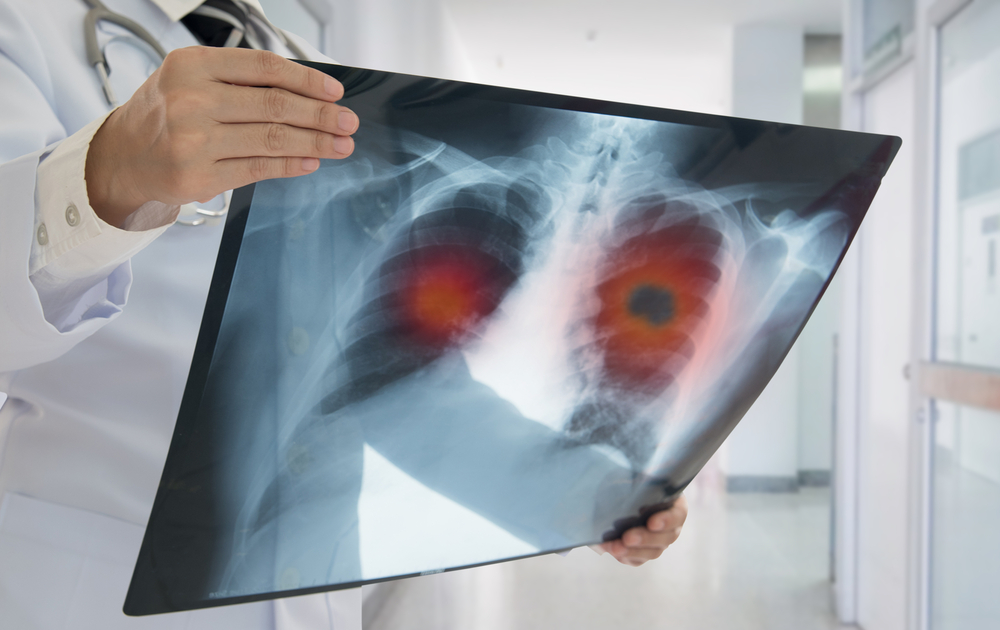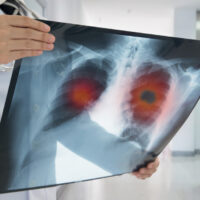Approximately 1,414,259 cases of prostate cancer and 375,304 prostate cancer deaths were estimated to have occurred globally in 2020.
What is Prostate Cancer?
Prostate Cancer happens when the cells in the prostate gland (male sex gland) start growing out of control. The prostate gland is a small walnut-shaped gland in men which is essential to produce semen fluid that nourishes and transports sperm.
Most prostate cancers grow gradually and stay confined to the gland, where they might not be much harmful. However, other types could be aggressive and can spread quickly. Early diagnosis is the key to successful treatment.
Symptoms of Prostate Cancer
Though early stages might be asymptomatic, the five potential warning signs of prostate cancer are:
- Pain/burning sensation during urination or ejaculation
- Frequent urination, particularly at night
- Difficulty stopping or starting urination
- Sudden erectile dysfunction
- Presence of blood in urine and semen
Other symptoms include:
- Unusually weak flow of urine
- Unexplained pain around the prostate, particularly while sitting
In cases spread beyond the prostate gland, there could be swelling in the lower body, and the presence of back, hip or bone pain. There could also be abnormal bowel movements or urinary habits and unexplained weight loss.
Types of Prostate Cancer
The type of prostate cancer depends on the type of cell involved:
- Prostatic Adenocarcinoma/ Glandular Prostate Cancer: Most common form (about 99%) of prostate cancer that develops from the gland cells. The two main subtypes are:
- Acinar/conventional adenocarcinoma: Cancer starts developing in the back of the prostate near the rectum and may be felt by the doctor during the rectal examination. It increases the PSA (Prostate-Specific Antigen) levels in the blood which is a key marker for diagnosis. This form of cancer accounts for almost all prostatic adenocarcinomas.
- Prostatic ductal adenocarcinoma (PDA): It is a rare but more aggressive form of adenocarcinoma that grows and develops more rapidly. Frequently develops along with acinar form but in the cells lining the tubes and ducts of the prostate glands. It is harder to detect as the PSA levels do not really increase.A frequent urge to urinate, painful urination/ejaculation, and blood in semen are the most common symptoms of prostatic adenocarcinomas.
Other rare forms are :
- Small Cell Carcinoma: About 1% of prostate cancers develop from small round cells in the prostate. They can spread very quickly, such as to the bones.
- Squamous Cell carcinoma: Rare but fast-growing form that starts in the flat cells that cover the prostate glands.
- Neuroendocrine tumour or Carcinoids: A rare form developing in the nerve and gland cells that make & release hormones.
- Transitional cell(or urothelial) carcinomas: Grows in the urethra ( a tube that carries urine out of the body) and spreads to the prostate, or vice-versa, very rarely.
- Prostate Sarcomas(also called Soft-tissue prostate cancer): Develops outside the prostate glands, in the soft tissue of the prostate such as muscle and nerves. It is a very rare form, accounting for 0.1% of cases. ie. about 1 in 1,000 men.
Causes & Risk Factors
DNA mutations (especially the genetic mutations of BRCA1 and BRCA2) are known to be the main causal factor for prostate cancer. Although it still remains uncertain why one develops cancer, the below indicated risk factors increase the chances of developing prostate cancer:
- Age: Prostate cancer is rare for men below 40. About 6 in 10 cases are found in men older than 65. Chances of developing cancer increase rapidly in men after age 50.
- Ethnicity/Race: African American men and Caribbean men of African history are at higher risk of developing prostate cancer than other races.
- Family history: A known case of prostate cancer in the family among parents or siblings can increase the risk of having prostate cancer.
- Obesity: People who are obese are more likely to develop aggressive and recurrent cancer.
Complications of Prostate Cancer
Prostate cancer might lead to the below complications:
- Metastasis: The spread of cancer to the nearby organs like the urinary bladder, bones and lymphatic system is the most common complication of prostate cancer. After metastasis, it is unlikely to be completely cured but can be controlled.
- Incontinence: Urinary incontinence is found both in the disease and during the treatment. Treatment varies from medications to catheterization to surgery.
- Erectile dysfunction: Like incontinence, erectile dysfunction can result from both the disease and treatment of it. Medications and vacuum devices are helpful.
Stages of Prostate Cancer
Prostate Cancer is classified clinically from T1 to T4 stages:
| Stages | |
| T1 | The tumour cannot be felt during a rectal examination or seen during imaging. It may be accidentally found during surgery for another medical condition. |
| T2 | Tumour is confined to the prostate and can be felt during the rectal examination due to its size. It may also be seen in imaging. It is further classified as
|
| T3 | Tumour has grown out of the prostate.
|
| T4 | Tumour has spread to tissues next to the prostate like the rectum, urinary bladder, urethral sphincter, and pelvic wall. |
Diagnosis
- DRE: A Digital Rectal Examination is done by a doctor by inserting a gloved finger into the rectum to feel for any abnormal shape or thickness of the prostate. However, this is not very useful in the early stages where there will be no notable change felt.
- Blood test for PSA testing: Blood test involves testing for Prostate-Specific antigen(PSA) level. PSA is a type of protein produced by the prostate in people with prostate cancer. Inflammation in the prostate(prostatitis) may also cause high levels of PSA. Therefore, confirmatory tests like MRI or biopsy need to be performed.
- Imaging tests: It is particularly important to image the tumour’s location and its spread. An MRI, CT or PET scan would be done.
- Biopsy: A prostate biopsy is often done with a thin needle to collect a sample of prostate tissue and then sent to a pathology lab to test the presence of cancer cells.
Treatment and its side effects
1. Surgery:
Radical Prostatectomy involves the removal of the prostate gland. It is the best option when the cancer is confined only to the prostate. Laparoscopic surgeries are more commonly used these days as it is minimally invasive than an open radical prostatectomy.
2. Radiotherapy:
Involves a course of radiation therapy, particularly in advanced cases, to prevent the spread of cancer. It can be external beam therapy where the machine moves around the body directing high-powered radiation beams to the prostate area; or brachytherapy (internal radiation) where radioactive material is directly placed into the prostate using a hollow needle.
3. Chemotherapy:
Drugs are used to kill the rapidly growing cancer cells. Administration of drugs is via veins or oral pills.
4. Ablative therapy:
Freezing or heating prostate tissue to destroy the cells is used for very small prostate cancers where surgery is not possible. Cryotherapy or cryoablation involves freezing tissues while HIFU (High-intensity focused ultrasound) uses high-intensity ultrasound to heat the prostate tissue.
5. Hormone Therapy:
It is used to reduce the size of the prostate and prevent further growth.
6. Immunotherapy:
Drugs are used to strengthen one’s own immunity to fight off cancer cells.
7. Targeted drug therapy:
Uses specific drugs, especially in advanced or recurrent cases if the patient is not responding well to hormone therapy
8. Watchful waiting:
Involves monitoring patients for their symptoms and treating them only when there are signs of growth of prostate cancer. This is particularly useful in older men who develop cancer at later stages of their life where treatment can be very harsh given their old age. Active surveillance is another method where DRE and PSA are continuously done as a part of monitoring.
Prevention
DRE (Digital Rectal Examination) and PSA (Prostate-Specific Antigen) testing are the most commonly used screening measures to detect cancer. If one is particularly at risk of having prostate cancer, a doctor would advise screening. However, confirmatory diagnoses are very essential to further confirm cancer.
FAQs
The 5-year survival rate (the percentage of people alive after 5 years of diagnosis of cancer) for people with prostate cancer is 99%. 1 out of 3 men will survive after 5 years of diagnosis, even if it has spread to other parts of the body. The survival rate has improved in recent years with better screening and treatment options.
Medical professionals do not recommend performing a self DRE. However, regular screening like PSA testing & DREs performed by a doctor can be useful. Another option is to watch out for warning symptoms like painful urination, blood in urination, etc can help in early detection.
- 1Global Cancer Statistics 2020
- 2Science Direct
- 3American Cancer Society
- 4Cancer.Net
- 5Mayo Clinic
- 6WebMD
- 7Johns Hopkins Medicine
- 8NHS
- 9Urology Care Foundation
- 10CHP





